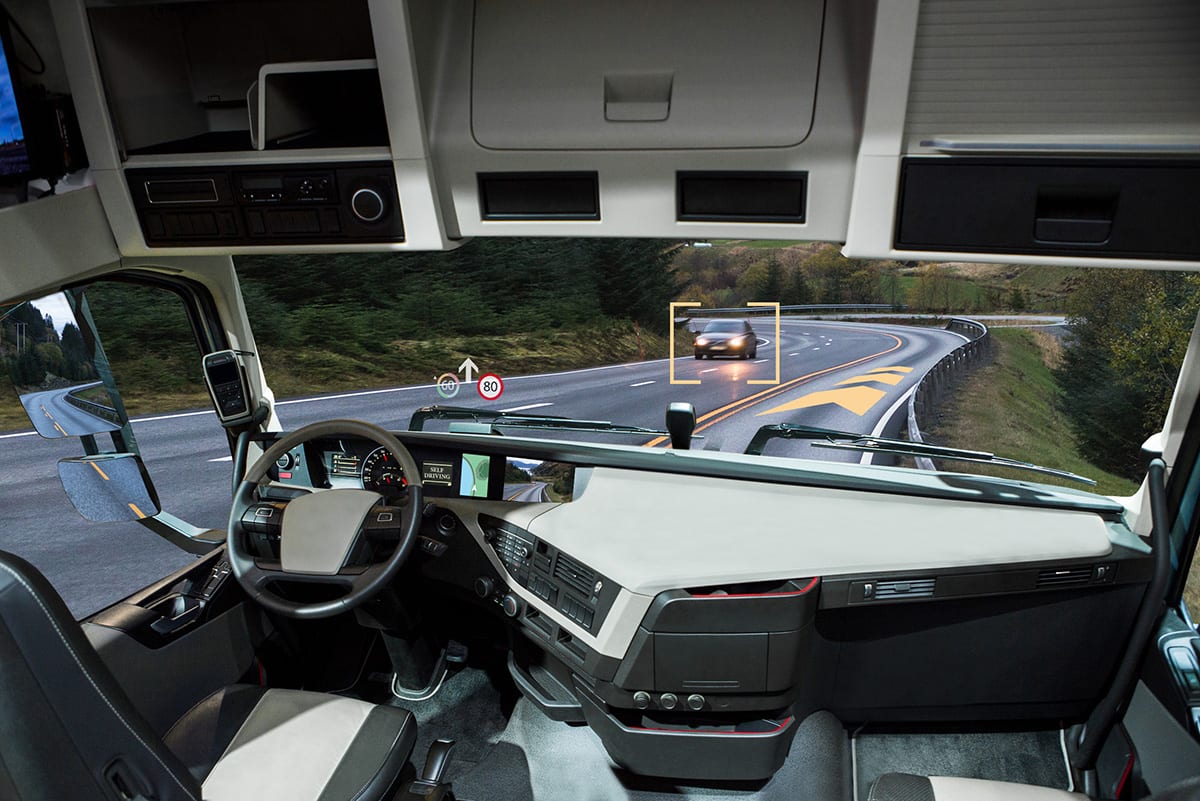If you look to old movies and television shows from your youth, we should all be zooming around in flying cars and letting our robots handle the mundane tasks around the house. But while we haven’t quite made it to those futuristic times, there continues to be ongoing interest in the world of autonomous vehicle (AV) technology and the benefits it could bring to the industry — from increasing safety, efficiency and productivity, to improving driver working conditions and helping to solve driver shortages.
In the Class 8 tractor world, this is anything but a new concept, with some OEMs testing prototypes for five or more years. In 2015, Daimler Trucks North America invited a handful of truck media members — including myself — and journalists from around the world to Las Vegas to experience its Inspiration Truck. After seeing it theatrically cross the Hoover Dam, we all got a closer look at the Level 3 autonomous truck at Las Vegas Motor Speedway the next day. After a short intro and walkaround, I was in the cab of this high-tech marvel of the modern age — and a little nervous to be honest. Taking the truck for a few passes around the track seemed fine, but we quickly took to the street and then a stretch of Nevada highway. And before I knew it, the driver hit a button, released the wheel, and let the truck do the driving for a few minutes.
Autonomous Technology Needs OEMs and Legislation in Sync
And DTNA is not alone in this venture, OEMs and tech companies alike are dipping their toes in the autonomous pond. Google’s Project Chauffer, a 2008 project that included seven self-driving cars making their way around the country without much fanfare, has evolved into an entirely separate company, Waymo. Currently, the company is working on a pair of autonomous projects: Waymo One, a ride-hailing service, and Waymo Via, a trucking and local delivery service that is currently operational in the Phoenix, Arizona, area.
But for all the hype surrounding this futuristic tech, there is something that will inevitably need to go along with it — regulation. According to the Governors Highway Safety Association, 38 states and the District of Columbia have passed some form of autonomous vehicle legislation or executive order. While some states allow for the Level 5 deployment of a commercial motor vehicle as long as there a driver behind the wheel, others only allow for testing of the technology. In all, five states have approved a study on the technology to define key terms/state contacts or authorize funding; 12 have simply approved testing; 16 states and the District of Columbia have permitted full deployment; and 18 states now allow for the testing or deployment of autonomous vehicles without a driver behind the wheel.
Drivers and Public Perception Needed
And what about cost? While there might be a day where the commercial driver retention/recruitment problem is solved with fully autonomous trucks, until then you will need both the tech and the tenant in place to ensure that one is watching the other. Drivers will need to be in the cab and ready to take control throughout the developmental process of this technology. The combination of these two could inevitably increase the overall cost of moving goods in the short run, and in an industry that operates on paper thin margins already, this could be a major barrier to adoption.
Public perception could also stall the acceptance and utilization of autonomous tech. According to a survey by Partners for Automated Vehicle Education, or PAVE, there is an air of skepticism surrounding AVs — close to 75% of respondents do not think AV tech is ready to hit the streets and about the same do not believe the rewards outweigh the risks. That’s why we need organizations like PAVE to dispel myths and create an open and honest forum for discussion on the topic of AVs. Described as a group that pushes education over advocacy, this collection of industry representatives, nonprofits, and academics offers policymakers, the media, and the public at large insight into the advantages and challenges surrounding AV acceptance. This axiom is supported by one very telling fact garnered from the group’s survey: An overwhelming 60% of respondents said they would trust the technology more if they better understood how it worked.
The Autonomous Future
So, what will the future bring? In my opinion, testing, testing, and more testing. This is not something that the feds, states, and people in general are ready to accept, yet. As with any new vehicle technology, OEMs need to put reliable miles behind it before this is ready for primetime. These are just some of the in-depth topics that I will spotlight in an upcoming series of articles focused on AVs — reaching out to the companies driving technology innovation and keeping readers up-to-date on exciting projects happening throughout North America and beyond.



